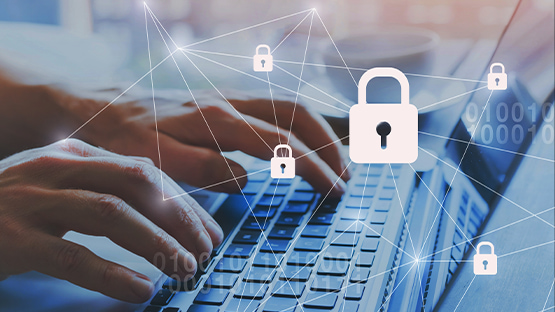What is two-step verification?
Bezpieczeństwo

3 December 2023
In today's world, cyber security is extremely important. The internet offers many opportunities, but it also carries the risk of data loss and identity theft. One way to counteract all this is to add an extra layer of security in the form of two-step authentication. Find out what it is and how to enable two-step verification.
Two-step verification - what is it?
The way you log in to your accounts on the various sites (Facebook, Instagram, etc.) is extremely simple. It involves entering your username and password (credentials). But what if hackers get hold of your credentials? To further secure access to your accounts, it is worth using two-step verification. What does it involve? In simple terms: you have to confirm in an additional way that you are the one logging into the account.
Two-step verification, also known as two-factor authentication, has been used for a long time in banks, for example. When this security feature is enabled, the user has to go through additional authentication after entering the login and password for the service. This happens during each subsequent login. Additional confirmation of identity can take the form of, for example: a code sent by SMS, biometric authentication or a push notification in a special mobile application. In the case of financial institutions, such protection is mandatory, and this is due to EU directives. Recently, however, more and more other companies operating in the virtual space have decided to introduce this feature.
How does two-step verification work?
What does a two-step login look like in practice? An additional tool, such as a smartphone or mobile app, is needed for additional verification. There are different authentication methods to choose from:
- SMS code - this is probably one of the most popular methods used for two-step authentication. To use it, all you need to do is enter your phone number in your account settings and activate the option in the settings. From then on, authorisation codes will come in the form of an SMS.
- Authorisation apps - this is also a very popular form of additional security. It works in a similar way to SMS, except that the code arrives on one of the authorisation apps. This could be Google Authenticator or Microsoft Authenticator, Authy or andOTP.
- Biometric security - fingerprints or eye shape are relatively difficult to forge. This is why biometric security verification is considered to be the most secure and advanced method. You will no doubt be familiar with scenes from the movies, where a character tries to get into a safe or a protected room with top-secret information using fingerprints. In this case, you can feel your way in and leave your fingerprint on a spot on your laptop or phone when logging into your account. There are also apps that enable this way of logging in e.g. Aegis Authenticator.
- Security token - this is a small device that looks like a memory stick. During two-step verification, it must be inserted into a USB port and then an access key generated. This can be done by clicking a button on the token or by using a fingerprint.
Although two-step authentication is an effective type of data security, it can be cumbersome to enter the key every time you log in.
For this reason, some applications allow the device in question to be added to 'trusted', so that verification at each login is not necessary. However, the use of this option is not encouraged as it reduces user security.
Why is two-step verification so important?
Many internet users are still unaware of the risks posed by new technologies. The number of recorded cybercrime incidents is increasing dramatically every year, which is why it is so important to secure your identity and use additional methods to confirm it.
Even if you think, for example, that you don't keep any important files on Google Drive or another cloud, remember that your account also connects to other applications such as email. By making it easy for hackers to access one source of your data, you are immediately leading them to another.
By using an additional identity confirmation step, it is made much more difficult for a hacker to break into an account. Even once a user's profile password is in his hands, he will not log in without access to the second verification component.
How do I enable two-step verification?
Two-step verification has already been introduced by various services and applications, such as Allegro, Google, Twitter, WhatsApp and InPost Mobile. While in the case of banking services, such authentication is mandatory, in other cases it is up to the user to decide whether he or she wishes to enable this form of security.
This option can usually be found in Settings, under sections related to security or privacy. The individual steps can be illustrated using a Google account as an example. Two-step verification can be enabled in the Security tab. The next step is to go to the section called Account Login. In this section there will be three fields, one of which will be Two-Step Verification. Once you have selected this option (Click on 'Enable' or 'Manage'), general information will be displayed, after which you can proceed. Once you have entered your password, the system will ask you to enter your phone number and select your verification option - either by SMS or by phone call. This will send you a code, which you should enter in the box provided. You can now benefit from the double security of your data.
Czytaj również

Data leakage - what should be done in this situation?
Personal data is confidential information that is used to identify a person's identity. For this reason, they should be duly protected. Ma...

Online safety, or what rules should be followed?
The Internet gives its users access to unlimited possibilities - to perform their professional duties remotely, to shop, to learn or to be...



